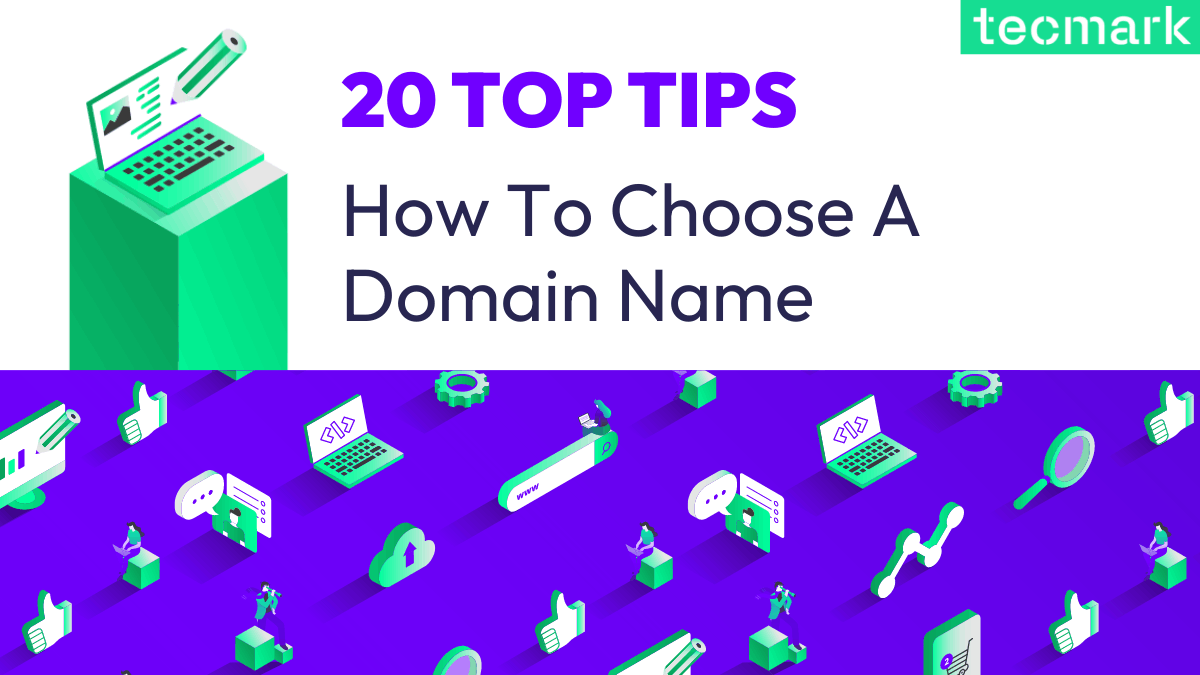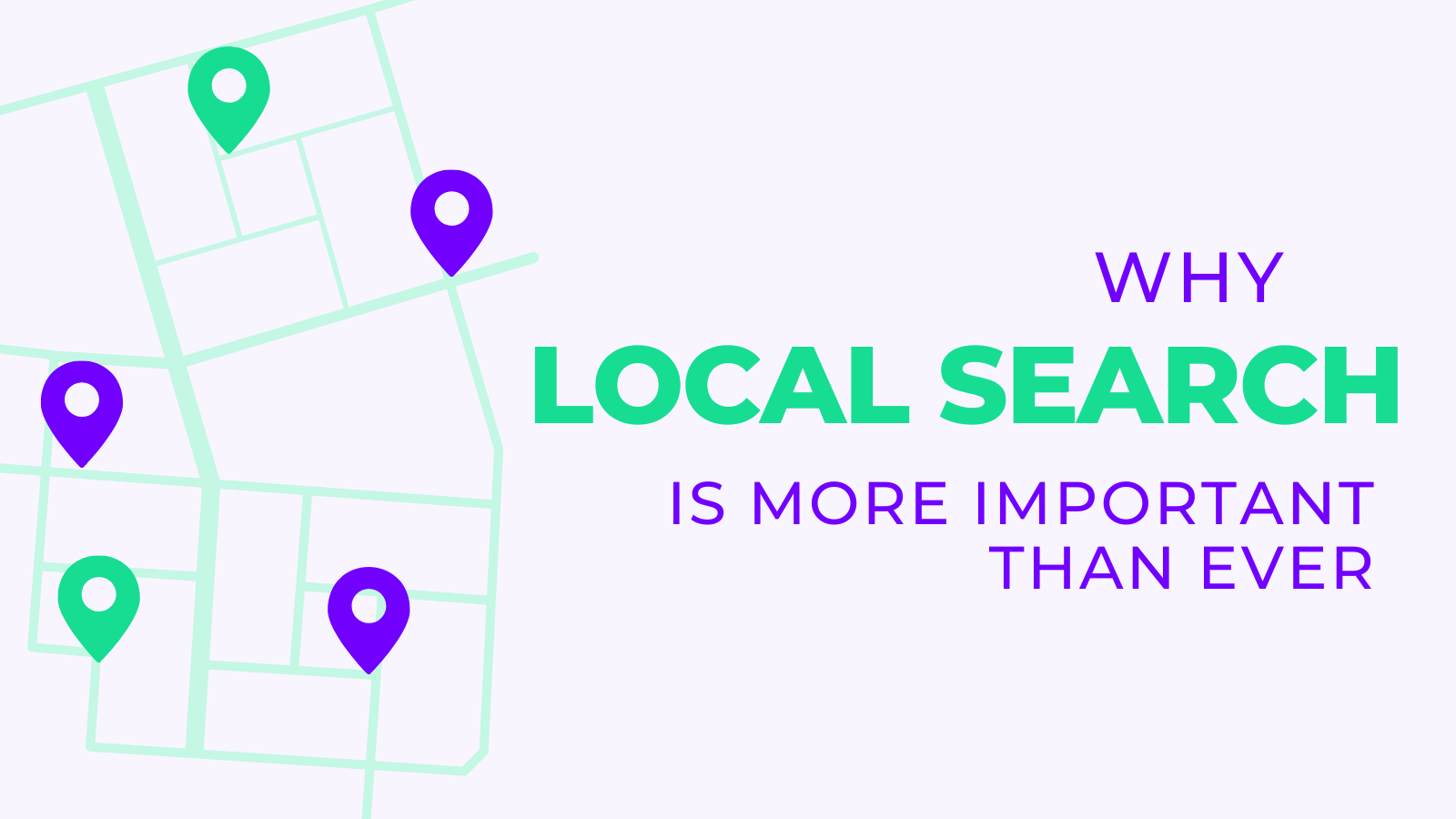
How To Choose A Domain Name
Choosing the right domain name is a key part of setting up a business and a website. Before writing copy or any other kind of search engine optimisation, a domain name helps to define your site and your audience. A well-chosen domain name also sets your site apart from your competitors. As a result, any company considering SEO in Manchester (or any busy market) should consider their domain name carefully before launch.
To help guide you through this consideration, Tecmark has put together this list of 20 tips for choosing the right domain name.
- What is A Domain Name?
- Top Tips On Choosing Your Domain Name
- 1. Keep It Simple, Short & Memorable
- 2. Keep It On Brand
- 3. Avoid Being Vague
- 4. Use A Thesaurus
- 5. Use Domain Name Generators
- 6. Make It Easy For Mobile Users
- 7. Think Long Term
- 8. Look For Room To Expand
- 9. Avoid Dashes and Hyphens
- 10. Incorporate Keywords Into Your Domain Name
- 11. Check Domain History and Trademark
- 12. Remember To Check Social Media Handles
- 13. Secure Your Domain Name Quickly
- 14. Pick The Best Registrar For Your Domain
- 15. Choose Your Top Level Domain Extension Carefully
- 16. Consider Buying Other TLDs
- 17. Avoid Common Homonyms
- 18. Don’t Forget About Misspellings
- 19. Don’t Forget To Look For Discounts
What is A Domain Name
A domain name is a string of characters – a word or a phrase – associated with an IP address and can be used instead of that IP address.
These characters work like a very small set of directions. Instead of telling someone to go to X, then Y, then Z, a domain name uses only a single word (or a small set of words) to convey the necessary information. Domain names make navigating the web easier, and it’s very difficult to imagine that the internet would have become so ubiquitous without them.
Domain names also serve as a business or organisation’s marketing presence on the internet. In much the same way that branding works in the wider marketing sphere, a domain name signals an entity’s presence – providing social credibility.
So now that we’ve got an idea of just how important a domain name is, let’s go over some great tips on how to pick a good one.
20 Tips for Choosing a Domain Name
Tip 1. Keep It Simple, Short and Memorable.
Firstly, before anything else, it’s important to keep your domain name as simple as possible. Before anything else, your domain name should be short, simple and easy to remember. Not only will this help with branding, but in certain cases, it can also impact user experience. Because both user experience and effective branding are so very important when it comes to running successful marketing campaigns it’s important to not forget them – even at this early stage.
Tip 2. Keep It On Brand
As we discussed early, domain names and branding are closely related, and if you want any marketing ventures to succeed, your domain name must reflect your branding. For example, if your company is called Scotland SEO, it makes no sense for your domain name to be www.digitalmarketingislay.co.uk.
Tip 3. Avoid Being Vague
Related to the above is the importance of avoiding being vague. A vague name risks failing to communicate your business, products or services. For example, compare Local Detailing (www.localdetailing.co.uk) to Jack’s Auto Detailing (www.jacksautodetailing.co.uk).
The first domain name provides some basic facts about the company – namely that it provides detailing work and works locally – but it fails to capture the imagination. At the same time, we have no idea where the business operates. This domain name may also lead to SEO problems later.
The second name is still vague, but it is better branded and provides more information. As with the first domain name, we know the company provides auto detailing work. We also have a name associated with the business – the titular Jack – who can serve as a ‘face’ for the brand. Even this small amount of information is enough to make the second domain name better.
Tip 4. Use a Thesaurus
If you’re having trouble thinking of a good name, you should consider using a thesaurus. It’s not easy to be creative, regardless of how much you practice, and finding a good name that describes your business well is particularly difficult. A thesaurus provides you with a wealth of synonyms that you can use to pick the right words when picking your domain name.
Tip 5. Use Domain Name Generators
Alternatively, if you’re having real trouble finding a domain name – if some of the words you’ve picked have already been trademarked, used, or just aren’t working– you can always choose to use a Domain Name Generator.
Domain Name Generators are websites that generate a new, available domain name. They’re ideal if you’re having trouble finding a good domain name or if you’re looking to save time.
There are several different domain name generators on the net, and each of them has its benefits. Some of our favourites include Lean Domain Search and Wordoid. Both of these options are keyword focused, making them ideal if you’re thinking about running an SEO campaign as part of your marketing strategy.
Tip 6. Make It Easy For Mobile Users
In 2022, mobile traffic accounted for almost 58.99% of all web traffic. As a result, you really should be considering the ease of input for mobile users when choosing your domain name. This means taking autocorrect into consideration, as well as avoiding the necessity to switch between keyboards.
Tip 7. Think Long Term
Ideally, your business will be using this domain for decades to come, and you don’t want to switch domains if possible – as doing so will impact your SEO campaigns. As a result, it’s a good idea to choose a domain that you will be happy with for years to come and your business won’t age out of.
Tip 8. Look For Room To Expand
When picking your domain name, it’s important to remember that you want your business to expand at some point – whether that be in more than one location or expanding your stock range. As a result, it’s a good idea to avoid hyper-localisation or to confine yourself to a single or specific product.
Tip 9. Avoid Dashes and Hyphens
As we mentioned previously, a domain name can impact user experience. One particular area where it impacts user experience is the case of dashes and hyphens. Ideally, your domain name should be easy to spell and pronounce, even in the worst circumstances. Having dashes and hyphens in your domain name complicates this process, which might put people off from visiting your website.
At the same time, we also previously mentioned that it’s important for mobile users that your domain name doesn’t require the user to switch keyboards. If you want to use a dash or a hyphen using a modern smartphone, you must switch keyboards.
Because of both these reasons, you should avoid dashes and hyphens.
For more information on creating well-structured, SEO-friendly URLs, read our How To Create SEO-Friendly URL article.
Tip 10. Incorporate Keywords Into Your Domain Name
Keywords are words and phrases that Google and other search engines use to organise the search engine results page (SERP). They tell search engines important information about the website: what its focus is, where it’s located, what products it sells (if any), etc. Each keyword will pull a different volume of traffic to it. Some keywords will pull a lot of traffic, other keywords will pull a low amount of traffic.
These keywords are normally found in a site’s titles, copy, alt text, schema etc. But another great place to consider placing a high-volume keyword is in your domain name. Incorporating the right keywords into your domain name will help you with both SEO and PPC campaigns, which will help you drive both direct and organic traffic to your site.
As such, we think conducting keyword research and using the keywords that you find as part of your domain name is a great idea.
Tip 11. Check The Domain History and Trademark
Once you’ve got a list of potential domain names, make sure to take some time to check the history of the domain. You may find that your domain name had a previous owner – who may still own the trademark for the term. The best way of checking the history of the domain name is with a tool like the Wayback Machine – which allows you to see screenshots of websites from a long time ago.
To check the trademark of a particular term, you should check the UK’s Intellectual Property Office’s trade mark journal or the United States Patent and Trademark Office.
Tip 12. Remember To Check Social Media Handles
Another thing to consider at this stage is social media handles. If you’re planning on taking your business to social media, it could put you in a very difficult position if you find out your domain name or the name of your business has already been taken by someone else. This is particularly true if that person is a competitor or puts content online which does not match your business’s value set.
Tip 13. Secure Your Domain Name Quickly
Domain names don’t stay available for long once someone has found a space in the market. So make sure you secure your domain name quickly once you’ve found an available domain name that matches your needs and goals.
Tip 14. Pick The Best Registrar For Your Domain
There are numerous domain registrar options available online today. It can be difficult to determine the right one. However, if you’re unsure which one suits you, factors to consider include:
- Ease of search
- Ease of configuration
- User-friendly, intuitive dashboard
- User-friendly DNS settings
- Hassle-free checkout process
- Customer service
- Reputation and history
Some of the largest and most popular domain registrars include GoDaddy.com, Ionos, and Domain.com.
Tip 15. Choose Your Top Level Domain Carefully
The Top Level Domain (TLD) is the suffix at the end of your site’s URL which indicates something about your site. For example, before it became the standard, .com used to designate a site that was set up for a for-profit business; .co.uk indicates a site is based in the United Kingdom.
It may be tempting to stick with the traditional .com or .co.uk (or your nearest localisation), but there are a lot of industry-specific TLDs that you could consider, too. For example, if you’re making a site for a local pizzeria, you could use the TLD .pizza. Choosing an industry-specific TLD helps to differentiate your site from your competitors and can build upon your branding.
Tip 16. Consider Buying Other TLDs
Another thing to consider is buying other TLDs at the same time as you purchase your primary TLD. This allows you to redirect traffic from these secondary TLDs towards your primary TLD and also completely secures your domain name from domain squatters.
Tip 17. Avoid Common Homonyms
The English language is full of homonyms – words which sound like other words that have different meanings. Using these words can complicate the domain name search process, and potentially risk your site losing traffic. As such, it may be a good idea to avoid words with common homonyms (for example sea and see).
Tip 18. Don’t forget about Misspellings
As with homonyms, you may lose traffic as a result of misspellings. One possible solution is to also purchase these other, misspelt domains. Then, you can have them redirect to your primary domain. Buying multiple domains isn’t ideal, as it means a higher operating cost, but it may be something to consider.
Tip 19. Don’t Forget To Look For Discounts
If you’re working on a budget, you should take advantage of every opportunity available to you – including discounts. Many domain registrars will run deals when it comes to registering your domain name – particularly during that important first year.
Likewise, many registrars will have different rates for different TLDs. As a result, you may find your local TLD or an industry-specific TLD is cheaper than the standard .com TLD.
These discounts are useful because they allow you to shrink operating costs at this crucial early stage.
Tip 20. Remember: Embracing A Good Domain Name is Better Than Chasing A Perfect One
Our final recommendation is perhaps the most important.
Throughout this stage, you may not ever be totally happy with your domain name. It may not sound correct or it might not completely describe your business. But it’s important to remember that your business and domain name does not define your business. It just describes it.
As long as you’ve followed the advice laid out in this blog, you should be able to come up with a business and domain name that will do what you want it to.
Extra: Tip 21. Structure Your Site Properly
No matter your domain name, it will be difficult for your website to reach its true potential without a fully optimised, well-structured website. A well-structured website will not only make navigation much easier for your visitors, but it will also make ranking for top keywords that much easier, too. Read Tecmark’s How To Create an SEO-Friendly Site Structure article to learn how.
Continue Your Web Journey With Tecmark
Choosing the domain name of your site is only the first step in your web journey. For those next steps, it’s best to have an experienced SEO expert by your side.
You don’t have to be a web developer to make a website. But site and page optimisation requires experience and know-how that you just can’t learn from watching a few how-to videos. At Tecmark, we have spent the past 15 years gaining that experience and know-how.
Get in touch with Tecmark today to learn more about us and take the next important steps in your web journey.


